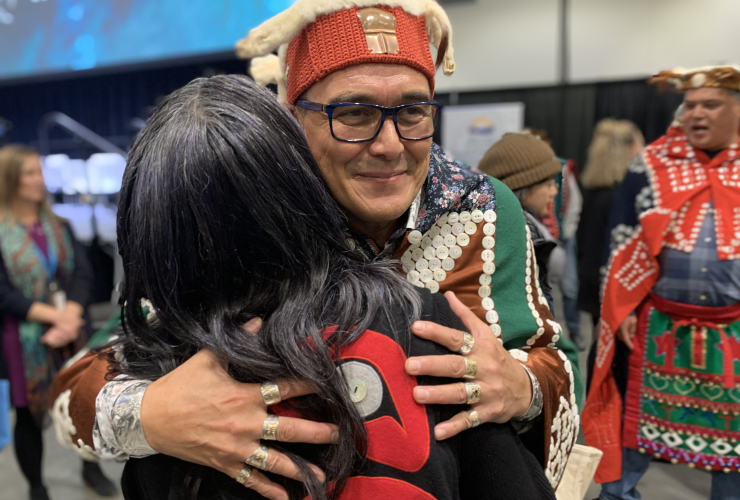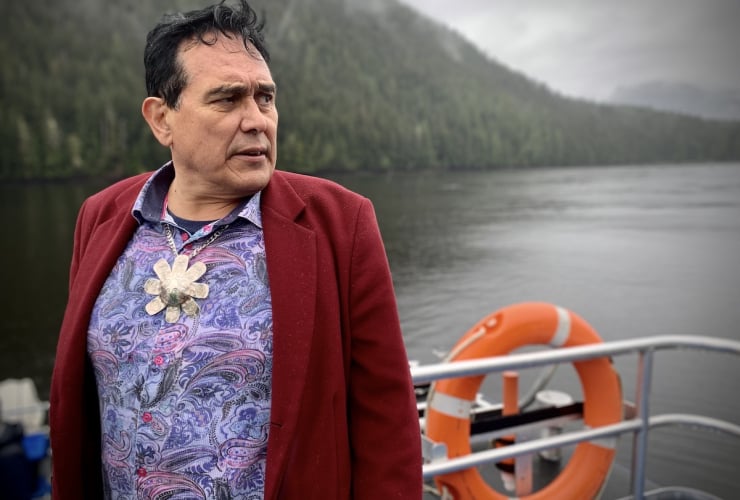Support journalism that lights the way through the climate crisis
A coastal First Nation is celebrating global recognition of its marine protected area after recently snagging a “blue park” designation that highlights exemplary ocean conservation efforts around the world.
The Kitasoo Xai’xais First Nation (KXFN) Gitdisdzu Lugyeks Marine Protected Area (MPA), about 500 kilometres north of Vancouver, is the first certified blue park in Canada.
It will receive $8,000 in funding and join 30 other parks around the world awarded “blue park” status by the Marine Conservation Institute, an international science-based group that advocates for ocean conservation.
“Getting this award and international recognition was a pretty cool thing,” KXFN elected Chief Doug Neasloss told Canada’s National Observer. Gitdisdzu Lugyeks is also the first Indigenous-protected marine blue park in the world, he said.
The conservation area covers 33.5 square kilometres in Kitasu Bay, near Laredo Sound and the KXFN community of Klemtu, on B.C.’s central coast.

Map of the Indiegenous-led Gitdisdzu Lugyeks marine protected area on B.C.'s central coast. Image KXFN Stewardship Authority
The bay’s shallows boast eelgrass meadows and kelp forests that serve as nurseries for juvenile sockeye, coho, pink and chum salmon, while its deeper waters support halibut and other bottom-dwelling fish and marine life.
Gitdisdzu Lugyeks is getting international recognition but is being overlooked at home, falling victim to foot-dragging by the federal government, Neasloss said.
The KXFN and more than a dozen other coastal nations and organizations have worked for upwards of two decades with the province and the federal government on the B.C. Northern Shelf Marine Protected Area Network — a yet-to-be realized patchwork of MPAs across B.C.’s central and northern coasts, Neasloss said.
However, frustrated with Ottawa’s slow pace of protecting the bay’s fragile ecosystem and abundant marine life, KXFN’s elected and hereditary leaders formally and unilaterally announced the Gitdisdzu Lugyeks MPA in June 2022.
The nation expects to establish other marine conservation areas in their territorial waters moving forward, but said it couldn’t afford to wait for the federal government to get up to speed with protections for the bay that functions as the community’s “breadbasket,” Neasloss said.
Rich in cultural and spiritual history, Kitasu Bay supports one of the last abundant herring spawns along the central coast, vital to the nation’s communal herring roe on kelp (ROK) fishery — which harvests the protein-rich eggs but leaves the fish alive to flourish and spawn again.

The nation has stewarded and been nourished by Kitasu Bay for thousands of years, Neasloss said.
The federal government’s future recognition and co-operation around the MPA is welcome, but the nation isn’t asking for permission given KXFN’s inherent Aboriginal rights and title, he stressed.
“We hope to collaborate with other levels of government, but our MPA is real. It’s there and we’re going to enforce it,” Neasloss said.
“This is just formalizing what we've been doing for a long time.”
The nation has developed a management plan and the KXFN’s Coastal Guardians already monitor and protect the marine park, he noted. The federal government has promised to protect 25 per cent of its lands and waters by 2025, and 30 per cent by 2030.
To date, the federal government has protected just under 15 per cent of its richest ocean areas, and the Gitdisdzu Lugyeks MPA could help Ottawa meet its 2025 target, Neasloss said. What's more, the blueprint for the Northern Shelf MPA network, also known as the Great Bea Sea MPA network (which includes Kitasu Bay), was formally endorsed by all the coastal First Nations and the federal and provincial governments last February.
The nation has already reached out to the commercial fishing sector, which has been respectful and co-operative of KFXN’s protections for the bay, Neasloss said.
“We’ve asked all the industries and they’ve all agreed to the standards, which is great,” he said.
“We haven’t seen much resistance there at all.”

Nearly half the bay is already an established federal rockfish conservation area. However, the Department of Fisheries and Oceans (DFO) continues to include the rest of the bay in annual commercial fishery plans, Neasloss said.
“We want people to come [to our territory] and fish here, we want people to come visit here, but Kitasu Bay is not one of those areas,” Neasloss said.
The nation is dependent on both communal and commercial fisheries yet recognizes protecting some key spots is vital for important species like herring, salmon and other marine life and to preserve fishing in the future, he added.
“We recognize the importance of fishermen and we want to look out for their best interests,” Neasloss said, noting numerous scientific studies demonstrate conservation areas ultimately boost fish populations and benefit local fisheries.
“We would not chop off our own foot,” he said.
“We’ve got to survive here and wouldn’t do anything that would hurt ourselves, including fishermen.
“I think this is a win-win for everybody.”
Rochelle Baker / Local Journalism Initiative / Canada’s National Observer
Congratulations! Thank you
Congratulations! Thank you National Observer for writing on this important milestone. This and the formalization of Haida Gwaii as Haida land should have been on national news broadcasts. Canadians ought to be proud of these accomplishments by this land's original people who have worked so hard for realistic climate and earth protection.






Comments